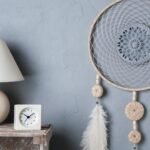How to Start Your Own Art Collection: Tips for Beginners
Starting an art collection can be an exciting and rewarding journey. Whether you’re looking to invest, decorate your space, or simply appreciate art, building a collection requires some knowledge and planning. Here’s a comprehensive guide for beginners on how to start your art collection, including practical tips and key considerations.

Define Your Goals and Budget
Before diving into art collecting, it’s essential to define your goals and set a budget. Are you collecting for personal enjoyment, as an investment, or both? Understanding your motivations will help guide your choices and strategy. Establishing a budget ensures you make informed decisions and avoid overspending. Art can vary significantly in price, so having a clear financial plan will help you manage your purchases effectively.
Educate Yourself About Art
Building a successful art collection starts with education. Familiarize yourself with different art styles, periods, and movements to understand what resonates with you. Explore various art forms such as painting, sculpture, photography, and prints. Read books, visit museums, and attend gallery openings to deepen your knowledge. Learning about artists, their techniques, and art history will enhance your appreciation and help you make informed decisions.
Identify Your Preferences
Determine what kind of art speaks to you. Do you prefer contemporary or classic pieces? Are you drawn to abstract or representational art? Identifying your preferences will guide your selection process and help you build a collection that reflects your personal taste. Start by creating a vision board or a list of artworks and artists that inspire you. This exercise will provide direction and help you focus your efforts.
Research and Discover Artists
Once you have a sense of your preferences, research and discover artists whose work aligns with your taste. Look for emerging artists, established names, and those whose work fits within your budget. Explore online galleries, art fairs, and local exhibitions to find artists whose work you admire. Engaging with the art community and following art blogs can also help you stay informed about new and exciting artists.
Attend Art Fairs and Galleries
Art fairs and galleries are excellent places to discover new artworks and connect with artists and dealers. Attending these events allows you to view a wide range of art, meet other collectors, and gain insights from professionals in the field. Take the time to explore various booths, ask questions, and learn about the artists and their works. Visiting galleries regularly will also help you stay updated on current trends and available artworks.
Verify Authenticity and Provenance
When purchasing art, it’s crucial to verify the authenticity and provenance of the piece. Authenticity ensures that the artwork is genuine, while provenance tracks its history and ownership. Request certificates of authenticity, provenance documentation, and any relevant details about the artwork’s background. Doing due diligence helps you avoid counterfeit pieces and ensures that you’re making a sound investment.
Discover the Charm of French-Style Online Gaming
For lovers of sophisticated entertainment, casinolariviera offers an immersive experience inspired by French elegance. The site stands out with its diverse selection of casino games and refined atmosphere. It perfectly combines the joy of gaming with the comfort of a modern platform. An ideal destination for those seeking a touch of luxury in their moments of relaxation.
Make Informed Purchases
Make informed decisions when purchasing art by considering factors such as the artist’s reputation, the artwork’s condition, and market trends. Evaluate the artwork’s quality, technique, and historical significance. If possible, consult with art advisors or experts to gain additional insights. Remember, art is a personal investment, so choose pieces that you genuinely appreciate and connect with.
Care for Your Art Collection
Proper care and maintenance are essential for preserving your art collection. Display artworks in a controlled environment with appropriate lighting and temperature conditions. Avoid direct sunlight, excessive humidity, and extreme temperatures, which can damage the artwork over time. Regularly clean and inspect your pieces, and consider professional framing or conservation services for valuable or delicate works.
Document and Organize Your Collection
Maintaining thorough records of your art collection is important for tracking its value and provenance. Document each piece with details such as the artist’s name, title, date of creation, acquisition date, and purchase price. Create a digital or physical inventory to keep track of your collection and update it as you acquire new artworks. Proper documentation will help you manage and insure your collection effectively.
Network with Other Collectors
Building relationships with other art collectors and enthusiasts can provide valuable insights and opportunities. Join art clubs, attend collector events, and participate in online forums to connect with like-minded individuals. Networking can lead to valuable recommendations, access to private collections, and potential collaborations. Engaging with the art community will enhance your knowledge and enrich your collecting experience.
Conclusion
Starting your own art collection is a rewarding endeavor that requires thoughtful planning and informed decision-making. By defining your goals, educating yourself, and researching artists, you can build a collection that reflects your personal taste and interests. Attending art fairs, verifying authenticity, and caring for your collection are crucial steps in the process. Documenting and networking with other collectors further enhances your experience and helps you stay connected to the art world. Embrace the journey and enjoy the process of discovering and curating artworks that resonate with you.

